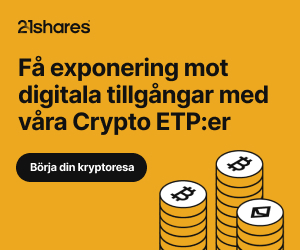Nyheter
China Developments Lead Recent Tailwinds
Publicerad
9 år sedanden
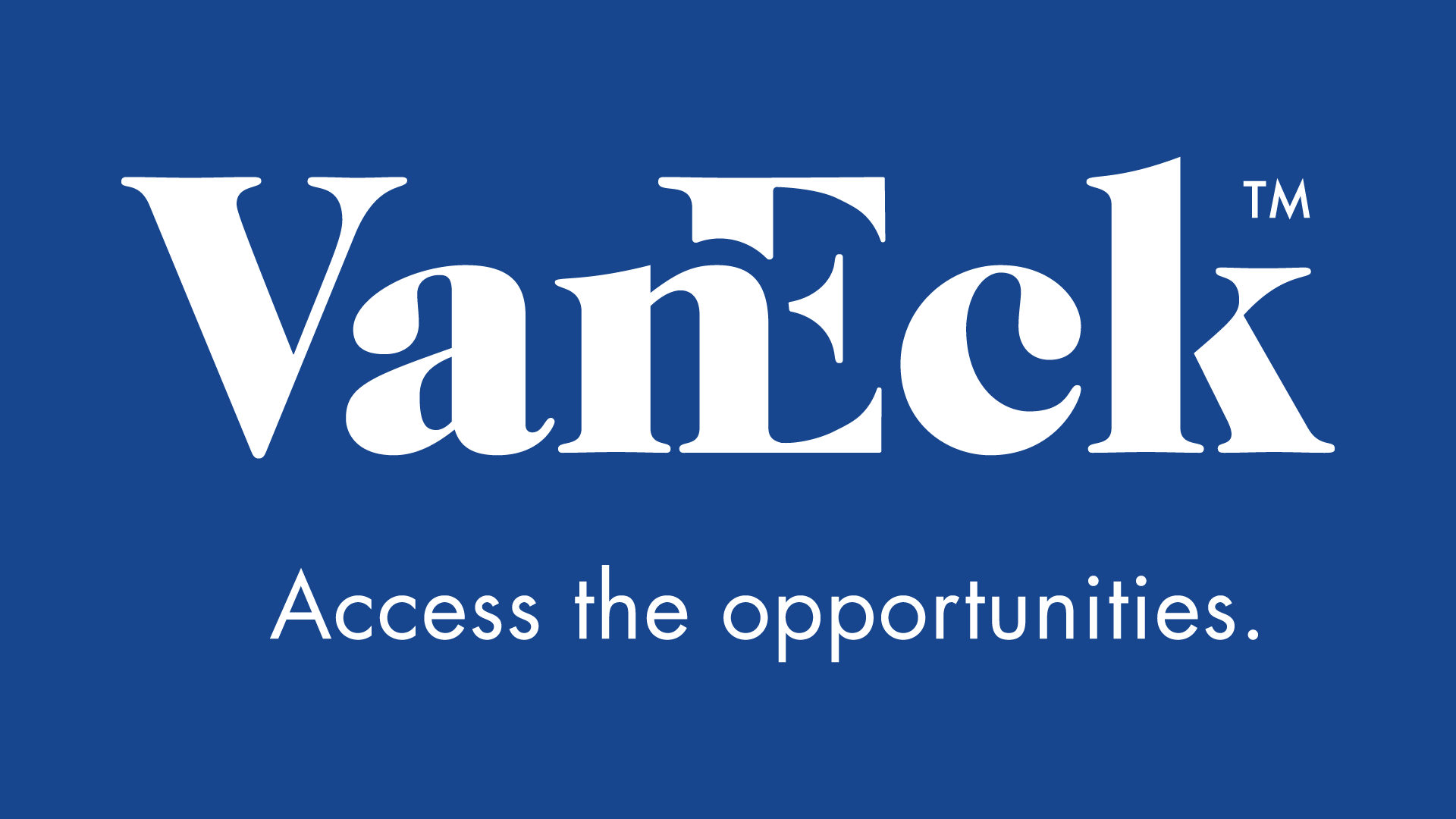
- Capital outflows and currency stabilization in China help the overall emerging markets (EM) environment
- Headwinds including leverage in China, fiscal deterioration, and European issues remain prevalent
- Liquidity, defensive positioning and unconstrained approach remain crucial in periods of uncertainty
Market Overview
The market environment remains unsettled. The quality of the macro flow in major economies is still very uneven (despite a larger number of positive macro surprises in both developed G10 and EM) and many central banks find themselves in a policy quagmire where additional monetary easing results in stronger currencies and higher interest rates. Markets – no doubt “inspired” by Janet Yellen’s end-of-March speech – continue to price in a very dovish scenario for the Federal Reserve (Fed) that envisages only two full policy rate hikes in the next three years. A big increase in neutral investor positioning (as measured, for example, by the American Association of Individual Investors) in past weeks is a reflection of these uncertainties which, in turn, is a byproduct of tensions between serious macro/policy headwinds and tailwinds. The “tailwinds” cluster includes a more sanguine near-term outlook for China, tentative signs that EM growth might be bottoming out, and reasonably strong external accounts in many EMs. On the “headwinds” side of the equation, we find multiple unresolved issues in Europe, major imbalances in China (possibly made worse by the recent policy moves), a Fed struggling with forward guidance, a massive widening of the EM fiscal gap, and deteriorating corporate profitability.
Portfolio Review
We believe that the recent tailwinds are likely to dominate for the near term. It looks like Chinese authorities have managed to slow down capital outflows through official channels. The decline in international reserves is now smaller than in November-December 2015. Authorities are also implementing additional measures to support growth, mainly through additional credit supply. Possible fiscal stimulus might prop up GDP growth as well. These factors should reduce the immediate depreciation pressure on the renminbi (CNY) and authorities should be able to maintain the existing exchange rate regime for a little longer, alleviating concerns about the impact of CNY devaluation on other emerging market currencies (especially in Asia). Additional EM foreign exchange (FX) strength is a benefit to the inflation outlook and in this environment, the Fed’s dovish policy stance might provide EM central banks with more room to ease, which could facilitate a cycle of stronger currencies, lower inflation, lower interest rates and a better growth outlook. There are already tentative signs (better macro surprises and higher PMIs) that the growth outlook in EM might be improving. Consensus forecasts for 2016 quarterly GDP growth in EM have also been edging up since mid-March and additional policy support might prove crucial for further progress. Lower inflation can further boost real interest rates in EM, which already look attractive relative to the past lows and relative to U.S. Treasuries (UST). An important, although temporary, aspect of China’s current policy mix is its positive impact on the housing market and, as such, on global commodity prices, especially metals, which should provide additional support to EM FX and external balances.
However, persistent headwinds abound. Our key concern is that China’s near-term growth/FX relief might come at the price of worsening imbalances, which will likely make any future resolution more problematic. Specifically, the leverage context remains highly worrisome as authorities intend to accelerate M2 money supply (includes cash, checking and savings deposits, money market mutual funds) growth. The same applies to a very high bank assets/nominal GDP ratio (especially when compared to China’s still relatively low per capita GDP). The success of China’s credit boost is questionable given that it now takes four extra units of credit (measured by Total Social Financing, a figure the Chinese government created to track all the money in its system) to produce one extra unit of nominal GDP. Despite the recent small improvements, both China’s growth slowdown and the decline in international reserves are of historic proportions and the reserve adequacy now looks stretched on several metrics. So, while we acknowledge the recent positive signals coming from China, our longer-term view on China’s economic, policy and, political challenges remains unchanged.
Another set of concerns relates to the recent fiscal deterioration in EM and rating downgrades it might entail. After several years of stability (2010-2014), the aggregate EM fiscal gap widened sharply in 2015, reaching 3.7% of GDP – the worst in the past 15 years – and consensus expects further deterioration to 4% of GDP in 2016. We doubt that rating agencies will respond kindly to the deterioration and we expect further rating/outlook downgrades.
Our third set of concerns centers on unresolved European issues. The potential for Greece to leave the eurozone (“Grexit”) is resurfacing again and will keep on reappearing unless there are more radical steps to help reduce the debt burden. The immigration/refugee issue looks thoroughly mishandled and we should expect further instances of political extremism. The situation in the banking sector appears murky at best and bank credit default swap spreads started to widen again after a brief post-European Central Bank (ECB) respite in early March. There is also growing evidence that negative interest rates are punishing banks. Finally, corporate profitability is deteriorating and capex spending remains high relative to cash flow from operations.
The portfolio implications of these developments are as follows: (1) be nimble and liquid (and the unconstrained approach is more important than ever); (2) be aware of the headwinds that we view as resurgent and have a reaction function (ours is when China’s property market stalls again and/or the Fed hikes); (3) respect tailwinds in downturns – big and long rallies often happen when things are bad.
Specifically, we maintain our defensive positions (approximately 40% of the portfolio) in hard-currency bonds with spread/beta positions (i.e., Argentina and Brazil) and/or with defensive characteristics (i.e., South Korea). We also maintain selective exposure to local-currency denominated bonds (approximately 50% of the portfolio). We focus on countries with high real interest rates, where central banks that are not afraid to tighten if necessary and whose currencies were allowed to depreciate during the past risk-off episodes (i.e., Mexico, Indonesia, Malaysia, and Brazil). Finally, we have exposure to selective EM corporates (about 10% of our portfolio) with a focus on liquid companies that demonstrate low-beta to the economy and that can benefit from FX weakness through local-currency costs.
Exposure Types and Significant ChangesThe changes to our top positions are summarized below. Our largest positions are currently: Brazil, Mexico, Argentina, Peru, and South Africa.
- We added local-currency sovereign exposure in Indonesia and Peru to potentially benefit from the uptick in commodity prices and lower than expected inflation that allowed the Bank of Indonesia to cut and the central bank of Peru to hold. We also expect to benefit from changes in Indonesia’s regulatory environment that should boost local demand for government bonds.
- We also added local-currency exposure to Brazil where impeachment sentiment is rapidly gaining momentum and inflation appears to be topping off. We also increased local exposure in Mexico and Malaysia where inflation remains under control.
- We reduced hard-currency sovereign exposure in South Korea and Israel – low beta bonds that have performed well but have been reduced to reallocate to more compelling opportunities.
- We also reduced hard-currency sovereign exposure in the Philippines, Chile, and Hungary (where Prime Minister Viktor Orban’s fight with the EU has intensified lately).
Fund Performance
- The Fund (EMBAX) gained 3.27% in March, compared to a 6.16% gain for a 50% local-50% hard-currency index.The Fund’s biggest winners were Brazil, Mexico, Argentina, and Peru. The Fund’s biggest losers were Israel, South Korea, and Indonesia.
- Turning to the market’s performance, the GBI-EM’s biggest winners were Russia, Colombia, and South Africa. The biggest losers were Nigeria, China, and Thailand.
- The EMBI’s biggest winners were Ecuador, Mongolia, and Zambia, while its biggest losers were Serbia, Poland, and Romania.
Manager Commentary
By: Eric Fine, Portfolio Manager
Please note that the information herein represents the opinion of the portfolio manager and these opinions may change at any time and from time to time.
Diversification does not assure a profit or prevent against a loss.
Expenses: Class A: Gross 1.32%; Net 1.25%. Expenses are capped contractually until 05/01/16 at 1.25% for Class A. Caps exclude certain expenses, such as interest. Please note that, generally, unconstrained bond funds may have higher fees than core bond funds due to the specialized nature of their strategies. The tables above present past performance which is no guarantee of future results and which may be lower or higher than current performance. Returns reflect applicable fee waivers and/or expense reimbursements. Had the Fund incurred all expenses and fees, investment returns would have been reduced. Investment returns and Fund share values will fluctuate so that investors’ shares, when redeemed, may be worth more or less than their original cost. Fund returns assume that dividends and capital gains distributions have been reinvested in the Fund at Net Asset Value (NAV). Index returns assume that dividends of the index constituents have been reinvested. Investing involves risk, including loss of principal; please see disclaimers on next page. Please call 800.826.2333 or visit vaneck.com for performance current to the most recent month ended.
Data Sources: VanEck Research, FactSet. All portfolio weightings and statements herein as of March 31, 2016. Unless otherwise indicated.
Duration measures a bond’s sensitivity to interest rate changes that reflects the change in a bond’s price given a change in yield. This duration measure is appropriate for bonds with embedded options. Quantitative Easing by a central bank increases the money supply engaging in open market operations in an effort to promote increased lending and liquidity. Monetary Easing is an economic tool employed by a central bank to reduce interest rates and increase money supply in an effort to stimulate economic activity. Correlation is a statistical measure of how two variables move in relation to one other. Liquidity Illusion refers to the effect that an independent variable might have in the liquidity of a security as such variable fluctuates overtime. A Holdouts Issue in the fixed income asset class occurs when a bond issuing country or entity is in default or at the brink of default, and launches an exchange offer in an attempt to restructure its debt held by existing bond holding investors.
Emerging Markets Hard Currency Bonds refers to bonds denominated in currencies that are generally widely accepted around the world (such as the U.S.-Dollar, Euro or Yen). Emerging Markets Local Currency Bonds are bonds denominated in the local currency of the issuer. Emerging Markets Sovereign Bonds are bonds issued by national governments of emerging countries in order to finance a country’s growth. Emerging Markets Quasi-Sovereign Bonds are bonds issued by corporations domiciled in emerging countries that are either 100% government owned or whose debts are 100% government guaranteed. Emerging Markets Corporate Bonds are bonds issued by non-government owned corporations that are domiciled in emerging countries. A Supranational is an international organization, or union, whose members transcend national boundaries and share in the decision-making. Examples of supranationals are: World Bank, IMF, World Trade Organization. The European Central Bank (ECB) is the central bank for the euro and administers monetary policy of the Eurozone, which consists of 19 EU member states and is one of the largest currency areas in the world. The Labor Market Conditions Index (LMCI) is a dynamic factor model index that combines 19 labor market indicators to provide an assessment of overall labor market conditions. The Employment Cost Index tracks the changes in the costs of labor for businesses in the United States economy.
All indices are unmanaged and include the reinvestment of all dividends, but do not reflect the payment of transaction costs, advisory fees or expenses that are associated with an investment in the Fund. An index’s performance is not illustrative of the Fund’s performance. Indices are not securities in which investments can be made. The 50/50 benchmark (the “Index”) is a blended index consisting of 50% J.P. Morgan Emerging Markets Bond Index (EMBI) Global Diversified and 50% J.P. Morgan Government Bond Index-Emerging Markets Global Diversified (GBI-EM). The J.P. Morgan Government Bond Index-Emerging Markets Global Diversified (GBI-EM) tracks local currency bonds issued by Emerging Markets governments. The index spans over 15 countries. J.P. Morgan Emerging Markets Bond Index (EMBI) Global Diversified tracks returns for actively traded external debt instruments in emerging markets, and is also J.P. Morgan’s most liquid U.S-dollar emerging markets debt benchmark. The J.P. Morgan Emerging Country Currency Index (EMCI) is a tradable benchmark for emerging markets currencies versus the U.S. Dollar (USD). The Index compromises 10 currencies: BRL, CLP, CNH, HUF, INR, MXN, RUB, SGD, TRY and ZAR. The Consumer Confidence Index (CCI) is an indicator designed to measure consumer confidence, which is defined as the degree of optimism on the state of the economy that consumers are expressing through their activities of savings and spending.
Information has been obtained from sources believed to be reliable but J.P. Morgan does not warrant its completeness or accuracy. The Index is used with permission. The index may not be copied, used or distributed without J.P. Morgan’s written approval. Copyright 2014, J.P. Morgan Chase & Co. All rights reserved.
Please note that the information herein represents the opinion of the portfolio manager and these opinions may change at any time and from time to time and portfolio managers of other investment strategies may take an opposite opinion than those stated herein. Not intended to be a forecast of future events, a guarantee of future results or investment advice. Current market conditions may not continue. Non-VanEck proprietary information contained herein has been obtained from sources believed to be reliable, but not guaranteed. No part of this aterial may be reproduced in any form, or referred to in any other publication, without express written permission of Van Eck Securities Corporation ©2016 VanEck.
Investing involves risk, including loss of principal. You can lose money by investing in the Fund. Any investment in the Fund should be part of an overall investment program, not a complete program. The Fund is subject to risks associated with its investments in emerging markets securities. Investing in foreign denominated and/or domiciled securities may involve heightened risk due to currency fluctua-tions, and economic and political risks, which may be enhanced in emerging markets. As the Fund may invest in securities denominated in foreign currencies and some of the income received by the Fund will be in foreign currencies, changes in currency exchange rates may negatively impact the Fund’s return. Derivatives may involve certain costs and risks such as liquidity, interest rate, market, credit, management and the risk that a position could not be closed when most advantageous. The Fund may also be subject to credit risk, in¬terest rate risk, sovereign debt risk, tax risk, non-diversification risk and risks associated with non-investment grade securities. Please see the prospectus and summary prospectus for information on these and other risk considerations.
Investors should consider the Fund’s investment objective, risks, and charges and expenses carefully before investing. Bond and bond funds will decrease in value as interest rates rise. The prospectus and summary prospectus contain this as well as other information. Please read them carefully before investing. Please call 800.826.2333 or visit vaneck.com for performance information current to the most recent month end and for a free prospectus and summary prospectus.
Du kanske gillar
-
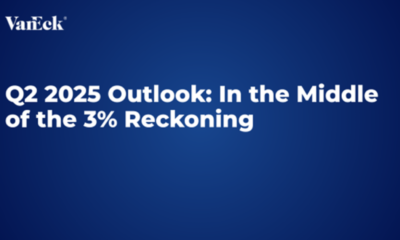

Q2 2025 Outlook: In the Middle of the 3% Reckoning
-


JESM ETF en fond från JPMorgan som satsar på emerging markets
-


Amerant Investments går in i Europa med lanseringen av en aktiv Latin American Debt ETF
-


De spanska fonder som gick bäst i januari
-
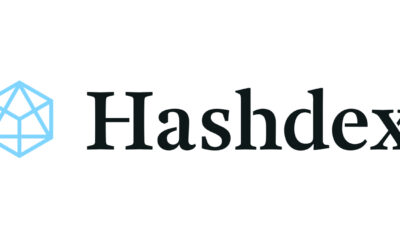

Crypto tumbles on tariff developments
-


HANetfs VD kommenterar att guldet nådde all-time high

Vatten är viktigt för alla. År 2010 erkändes den ”mänskliga rätten till vatten och sanitet” officiellt som en mänsklig rättighet av FN. Den ökande efterfrågan på rent vatten från den växande befolkningen och ekonomierna världen över, samtidigt som vattenkällorna är förorenade och hotade, är anledningen till att frågan om vattenförsörjning kommer att bli ännu viktigare för mänskligheten i framtiden.
Den ojämna fördelningen av vatten utgör också en stor utmaning för vår värld. Därför är det inte förvånande att investerare har identifierat vatten som en megatrend. Investera i vatten kan göras till låg kostnad genom att använda ETFer.
Många företag är dedikerade till uppgiften att förse världens befolkning med dricksvatten. Vattenfonder erbjuder tillgång till dessa företag, som är verksamma inom olika områden inom vattensektorn. Vattenfonder inkluderar företag som genererar sina intäkter genom att tillhandahålla relevant infrastruktur (avloppskonstruktion, leverans av pumpar och mätare, ingenjörskontor) eller producerar produkter och utrustning för vattenbehandling (till exempel tillverkare av utrustning och teknik för vattendesinfektion, rening och avsaltning). De spårar även företag som är verksamma inom vattenförsörjning och förvaltning av försörjningsnätverk.
För närvarande finns det fem index som spåras av 6 ETFer tillgängliga för att investera i vatten. Den årliga förvaltningskostnaden på dessa börshandlade fonder ligger på mellan 0,35 och 0,65 procent per år.
Vattenfonder i jämförelse
När man väljer en vatten-ETF bör man överväga flera andra faktorer utöver metodiken för det underliggande indexet och prestanda för en ETF. För bättre jämförelse hittar du en lista över alla vatten-ETFer med detaljer om namn, kortnamn, kostnad, utdelningspolicy, hemvist och replikeringsmetod. För ytterligare information om dessa vattenfonder, klicka på kortnamnet i tabellen nedan.
| Emittent ISIN | Kortnamn | Avgift % | Utdelnings- policy | Hemvist | Replikerings- metod |
| iShares Global Water UCITS ETF IE00B1TXK627 | IQQQ | 0.65% | Utdelande | Irland | Fysisk replikering |
| Amundi MSCI Water ESG Screened UCITS ETF Dist FR0010527275 | LYM8 | 0.60% | Utdelande | Frankrike | Fysisk replikering |
| L&G Clean Water UCITS ETF IE00BK5BC891 | XMLC | 0.49% | Ackumulerande | Irland | Fysisk replikering |
| Xtrackers MSCI Global SDG 6 Clean Water & Sanitation UCITS ETF 1C IE0007WJ6B10 | XDG6 | 0.35% | Ackumulerande | Irland | Fysisk replikering |
| iShares Global Water UCITS ETF USD (Acc) IE000CFH1JX2 | H2OA | 0.65% | Ackumulerande | Irland | Fysisk replikering |
| Global X Clean Water UCITS ETF IE000BWKUES1 | AKWA | 0.50% | Ackumulerande | Irland | Fysisk replikering |
Samtliga dessa ETFer, med undantag av iShares Global Water UCITS ETF USD (Acc), kan handlas på tyska Xetra.
Det betyder att det går att handla andelar i dessa ETFer genom de flesta svenska banker och Internetmäklare, till exempel DEGIRO, Nordnet, Aktieinvest och Avanza.
Nyheter
BE28 ETF ger exponering mot företagsobligationer med förfall 2028
Publicerad
10 timmar sedanden
13 april, 2025
Invesco BulletShares 2028 EUR Corporate Bond UCITS ETF EUR Dis (BE28 ETF) med ISIN IE000LKGEZQ6, försöker följa Bloomberg 2028 Maturity EUR Corporate Bond Screened-index. Bloomberg 2028 Maturity EUR Corporate Bond Screened Index följer företagsobligationer denominerade i EUR. Indexet speglar inte ett konstant löptidsintervall (som är fallet med de flesta andra obligationsindex). Istället ingår endast obligationer som förfaller under det angivna året (här: 2028) i indexet. Indexet består av ESG (environmental, social and governance) screenade företagsobligationer. Betyg: Investment Grade. Löptid: december 2028 (Denna ETF kommer att stängas efteråt).
Den börshandlade fondens TER (total cost ratio) uppgår till 0,10 % p.a. Invesco BulletShares 2028 EUR Corporate Bond UCITS ETF EUR Dis är den billigaste ETF som följer Bloomberg 2028 Maturity EUR Corporate Bond Screened index. ETFen replikerar det underliggande indexets prestanda genom samplingsteknik (köper ett urval av de mest relevanta indexbeståndsdelarna). Ränteintäkterna (kuponger) i ETFen delas ut till investerarna (kvartalsvis).
Invesco BulletShares 2028 EUR Corporate Bond UCITS ETF EUR Dis är en mycket liten ETF med 1 miljon euro tillgångar under förvaltning. Denna ETF lanserades den 18 juni 2024 och har sin hemvist i Irland.
Produktbeskrivning
Invesco BulletShares 2028 EUR Corporate Bond UCITS ETF Dist syftar till att tillhandahålla den totala avkastningen för Bloomberg 2028 Maturity EUR Corporate Bond Screened Index (”Referensindexet”), minus påverkan av avgifter. Fonden har en fast löptid och kommer att upphöra på Förfallodagen. Fonden delar ut intäkter på kvartalsbasis.
Referensindexet är utformat för att återspegla resultatet för EUR-denominerade, investeringsklassade, fast ränta, skattepliktiga skuldebrev emitterade av företagsemittenter. För att vara kvalificerade för inkludering måste företagsvärdepapper ha minst 300 miljoner euro i nominellt utestående belopp och en effektiv löptid på eller mellan 1 januari 2028 och 31 december 2028.
Värdepapper är uteslutna om emittenter: 1) är inblandade i kontroversiella vapen, handeldvapen, militära kontrakt, oljesand, termiskt kol eller tobak; 2) inte har en kontroversnivå enligt definitionen av Sustainalytics eller har en Sustainalytics-kontroversnivå högre än 4; 3) anses inte följa principerna i FN:s Global Compact; eller 4) kommer från tillväxtmarknader.
Portföljförvaltarna strävar efter att uppnå fondens mål genom att tillämpa en urvalsstrategi, som inkluderar användning av kvantitativ analys, för att välja en andel av värdepapperen från referensindexet som representerar hela indexets egenskaper, med hjälp av faktorer som index- vägd genomsnittlig varaktighet, industrisektorer, landvikter och kreditkvalitet. När en företagsobligation som innehas av fonden når förfallodag kommer de kontanter som fonden tar emot att användas för att investera i kortfristiga EUR-denominerade skulder utgivna av det amerikanska finansdepartementet.
ETFen förvaltas passivt.
En investering i denna fond är ett förvärv av andelar i en passivt förvaltad indexföljande fond snarare än i de underliggande tillgångarna som ägs av fonden.
”Förfallodag”: den andra onsdagen i december 2028 eller sådant annat datum som bestäms av styrelseledamöterna och meddelas aktieägarna.
Handla BE28 ETF
Invesco BulletShares 2028 EUR Corporate Bond UCITS ETF EUR Dis (BE28 ETF) är en europeisk börshandlad fond. Denna fond handlas på flera olika börser, till exempel Deutsche Boerse Xetra och Borsa Italiana.
Det betyder att det går att handla andelar i denna ETF genom de flesta svenska banker och Internetmäklare, till exempel DEGIRO, Nordnet, Aktieinvest och Avanza.
Börsnoteringar
| Börs | Valuta | Kortnamn |
| Borsa Italiana | EUR | BE28 |
| XETRA | EUR | BE28 |
Största innehav
| Namn | CUSIP | ISIN | Kupongränta | Vikt % |
| Volkswagen Leasing GmbH 3.875% 11/10/28 | D9T70CNQ3 | XS2745725155 | 3.875 | 2.20% |
| Swedbank AB 4.25% 11/07/28 | W94240FJ7 | XS2572496623 | 4.250 | 1.63% |
| ABN AMRO Bank NV 4.375% 20/10/28 | N0R37XLP3 | XS2613658710 | 4.375 | 1.62% |
| Carlsberg Breweries AS 4% 05/10/28 | K3662HDY6 | XS2696046460 | 4.000 | 1.60% |
| RCI Banque SA 4.875% 14/06/28 | F7S48DSE5 | FR001400IEQ0 | 4.875 | 1.59% |
| Booking Holdings Inc 3.625% 12/11/28 | — | XS2621007231 | 3.625 | 1.59% |
| Banco Santander SA 3.875% 16/01/28 | E2R99DB46 | XS2575952697 | 3.875 | 1.58% |
| Nordea Bank Abp 4.125% 05/05/28 | X5S8VP8C3 | XS2618906585 | 4.125 | 1.58% |
| E.ON SE 3.5% 12/01/28 | D2T8J8CT1 | XS2574873266 | 3.500 | 1.57% |
| General Motors Financial Co Inc 3.9% 12/01/28 | U37047BA1 | XS2747270630 | 3.900 | 1.57% |
Innehav kan komma att förändras
Nyheter
VettaFi lyfter fram stabiliteten i midstreamsektorn mitt i oljevolatiliteten och tillväxten inom naturgas
Publicerad
11 timmar sedanden
13 april, 2025
Stacey Morris chef för energiforskning på VettaFi, träffade Steve Darling från Proactive för att diskutera resultatet och positioneringen av Alerian Midstream Energy Dividend ETF (JMLP), och för att ge en bredare syn på midstreamsektorn inom energisektorn i samband med dagens föränderliga marknadsdynamik.
Morris började med att förklara mellanflödessegmentets roll inom energivärdekedjan och beskrev det som branschens ”frakt- och hanteringstjänst”. Till skillnad från uppströmsproducenter som är starkt exponerade för råvaruprisfluktuationer, är mellanflödesföretag fokuserade på att transportera, lagra och bearbeta olja och naturgas – tjänster som vanligtvis styrs av långsiktiga, avgiftsbaserade kontrakt. Denna strukturella modell, betonade hon, ger mellanflödesoperatörer stabila, förutsägbara kassaflöden, vilket gör dem mer motståndskraftiga i volatila eller sjunkande energiprismiljöer.
Samtalet gällde den senaste tidens svaghet på oljemarknaderna, där de amerikanska oljepriserna föll med ungefär 17 % mellan den 2 och 8 april 2025. Morris tillskrev nedgången främst till ökat utbud från OPEC+-länderna och växande oro över den globala ekonomiska tillväxten och handelsaktiviteten. ”Det har helt enkelt funnits ett antal orosmoment kring utsikterna för den globala ekonomin eller handeln”, noterade hon, vilket har ökat pressen på oljepriserna på kort sikt.
Morris påpekade dock att mellanliggande energitillgångar tenderar att prestera bättre i sådana miljöer. Deras minskade känslighet för råvarupriser och defensiva investeringsegenskaper – särskilt konsekventa utdelningar – gör dem till ett attraktivt alternativ för inkomstfokuserade och riskaversa investerare.
En av de mest övertygande delarna av tillväxthistorien för mellanliggande aktier, sa Morris, är dess exponering mot naturgas, som fortsätter att se ökande efterfrågan från flera sektorer. Hon lyfte fram prognoser som visar att den amerikanska efterfrågan på naturgas kommer att växa med 25 % mellan 2024 och 2030.
Morris betonade att mellanliggande företag är avgörande för denna tillväxt, tack vare deras viktiga roll i att bygga och driva de rörledningar och anläggningar som krävs för att effektivt flytta gas till inhemska och internationella marknader.
Viktigt är att Morris noterade att det underliggande indexet för Alerian Midstream Energy Dividend ETF lutar 65 % mot naturgasinfrastruktur, vilket ytterligare positionerar fonden för att dra nytta av långsiktiga trender inom naturgasexpansion, även mitt i kortsiktiga volatiliteter i oljepriserna.
Handla JMLP ETF
HANetf Alerian Midstream Energy Dividend UCITS ETF (JMLP ETF) är en europeisk börshandlad fond som handlas på bland annat London Stock Exchange och tyska Xetra.
Det betyder att det går att handla andelar i denna ETF genom de flesta svenska banker och Internetmäklare, till exempel Nordnet, SAVR, DEGIRO och Avanza.

Investera i vatten med en ETF

BE28 ETF ger exponering mot företagsobligationer med förfall 2028

VettaFi lyfter fram stabiliteten i midstreamsektorn mitt i oljevolatiliteten och tillväxten inom naturgas

NXTE ETP spårar priset på kryptovalutan Ethereum

Q2 2025 Outlook: In the Middle of the 3% Reckoning

Fonder som ger exponering mot försvarsindustrin

Crypto Market Risks & Opportunities: Insights on Bybit Hack, Bitcoin, and Institutional Adoption

Warren Buffetts råd om vad man ska göra när börsen kraschar

Svenskarna har en ny favorit-ETF

De bästa börshandlade fonderna för tyska utdelningsaktier
Populära
-

 Nyheter3 veckor sedan
Nyheter3 veckor sedanFonder som ger exponering mot försvarsindustrin
-
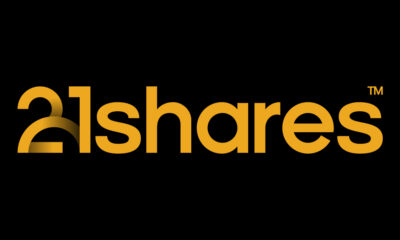
 Nyheter2 veckor sedan
Nyheter2 veckor sedanCrypto Market Risks & Opportunities: Insights on Bybit Hack, Bitcoin, and Institutional Adoption
-

 Nyheter3 veckor sedan
Nyheter3 veckor sedanWarren Buffetts råd om vad man ska göra när börsen kraschar
-

 Nyheter2 veckor sedan
Nyheter2 veckor sedanSvenskarna har en ny favorit-ETF
-

 Nyheter4 veckor sedan
Nyheter4 veckor sedanDe bästa börshandlade fonderna för tyska utdelningsaktier
-
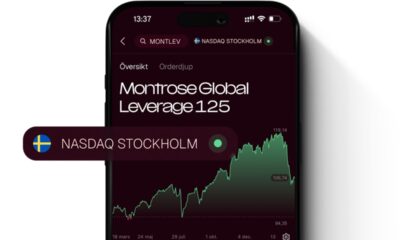
 Nyheter1 vecka sedan
Nyheter1 vecka sedanMontrose storsatsning på ETFer fortsätter – lanserar Sveriges första globala ETF med hävstång
-

 Nyheter4 veckor sedan
Nyheter4 veckor sedanHANetf lanserar Europa-fokuserad försvars-ETF
-
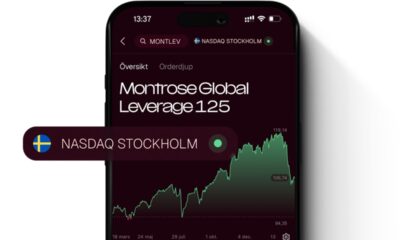
 Nyheter1 vecka sedan
Nyheter1 vecka sedanMONTLEV, Sveriges första globala ETF med hävstång


